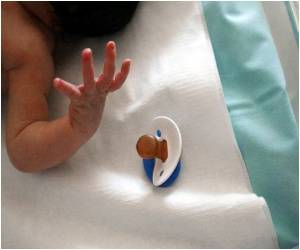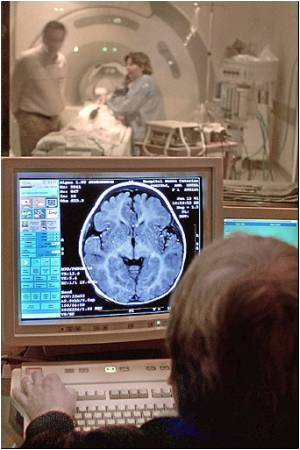A new brain scanning technique could help track abnormal brain development and thus detect autism-linked disorders early.

As the brain matures, neural connections change, and scientists say they can see these connections after a child spends just a few minutes in a high-tech MRI, or magnetic resonance imaging machine.
MRI scanners can detect moment-by moment changes in blood flow throughout the brain, yielding a picture of how its various parts work together, explains Bradley Schlaggar, a pediatric neurologist at Washington University in Saint Louis, Missouri.
Schlaggar and colleagues saw this in a study in which they used MRI scans to assess the blood flow patterns of 238 normal individuals ranging in age from seven to 30.
The scanner analyzed a total of almost 13,000 images and selected the best 200 images to assess brain maturity at a given age.
"This is very much like what people experience when they go to a pediatrician's office and have their height, and their weight, and their head circumference measured and the pediatrician plots where they are on those growth curves," Schlaggar said.
But because the brain connectivity index charts hundreds of neural connections for comparison, Schlaggar says it is far more complex -- and more accurate -- than a human growth chart.
After the data were analysed, researchers were able to predict whether subjects were children or adults just from their brain organisation.
Much like a child’s height or weight chart, the data formed a curving line that tracks the average path of normal brain development.
Traditional methods of looking at brain structure alone with an MRI often miss kids with even severe psychiatric disorders, Schlaggar said. That’s because brain structure doesn’t always correlate with psychiatric disease.
“The beauty of this approach is that it lets you ask what’s different in the way that children with autism, for example, are off the normal development curve versus the way that children with attention-deficit disorder are off that curve,” said Bradley Schlaggar.
Mapping out the brain’s function, on the other hand, can lead to psychiatric insights, he said.
Schlaggar says the implications of the work are that doctors will have a much more accurate tool by which to gauge brain development in children. "We'll be able to look at atypically developing populations and perhaps make diagnoses, make prognostic predictions, perhaps anticipate who's going to respond to which therapy and so on. We see that's the future of this kind of approach," he said.
The findings, published online in the journal Science, could be used to create a normal brain growth chart, it is hoped.
Schlaggar and colleagues saw this in a study in which they used MRI scans to assess the blood flow patterns of 238 normal individuals ranging in age from seven to 30.
The scanner analyzed a total of almost 13,000 images and selected the best 200 images to assess brain maturity at a given age.
"This is very much like what people experience when they go to a pediatrician's office and have their height, and their weight, and their head circumference measured and the pediatrician plots where they are on those growth curves," Schlaggar said.
But because the brain connectivity index charts hundreds of neural connections for comparison, Schlaggar says it is far more complex -- and more accurate -- than a human growth chart.
After the data were analysed, researchers were able to predict whether subjects were children or adults just from their brain organisation.
Much like a child’s height or weight chart, the data formed a curving line that tracks the average path of normal brain development.
Traditional methods of looking at brain structure alone with an MRI often miss kids with even severe psychiatric disorders, Schlaggar said. That’s because brain structure doesn’t always correlate with psychiatric disease.
“The beauty of this approach is that it lets you ask what’s different in the way that children with autism, for example, are off the normal development curve versus the way that children with attention-deficit disorder are off that curve,” said Bradley Schlaggar.
Mapping out the brain’s function, on the other hand, can lead to psychiatric insights, he said.
Schlaggar says the implications of the work are that doctors will have a much more accurate tool by which to gauge brain development in children. "We'll be able to look at atypically developing populations and perhaps make diagnoses, make prognostic predictions, perhaps anticipate who's going to respond to which therapy and so on. We see that's the future of this kind of approach," he said.
The findings, published online in the journal Science, could be used to create a normal brain growth chart, it is hoped.
Source-














